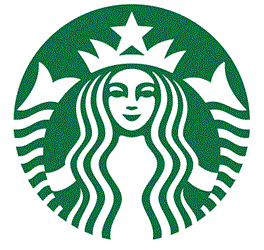Restaurant And Hospitality News – March 16, 2015

By Christine Kern, contributing writer

In news this week, ApplePay adds Jamba Juice and 13 others new retailers, Starbucks Plans Expansion of Mobile Order and Pay, the balance of power in online travel is shifting East, and QSRs are turning to digital management solutions to attract and retain millennial employees.
Jamba Juice and ApplePay Come Together Nicely
Jamba Juice Company, a leading healthy, active lifestyle brand, is one of the latest brands to adopt Apple Pay in its approximately 650 stores nationwide, according to a press release. “We are pleased to integrate ApplePay as an option for consumers seeking an easy and secure service through which to complete their transactions,” Julie S. Washington, Jamba Chief Marketing and Innovation Officer said in the release. “We believe Apple Pay will help improve the speed of service for today’s on-the-go consumer.” Jamba Juice is one of 14 new retailers that Apple announced as partners, a list that now totals 61 supporting stores. The updated list now includes Bashas', Coca-Cola Vending, Dan's Fresh Market, Dick's Fresh Market, Fuddruckers, Jamba Juice, Jersey Mike's, JetBlue, Lin's Fresh Market, Maceys, Office Max, Pep Boys, Regal Cinemas and Walt Disney World. CEO Tim Cook highlighted Coca-Cola's vending machines during yesterday's event as a "cool and convenient" place to use Apple Pay. The beverage giant currently operates 40,000 Apple Pay-compatible machines and plans to bring that number to 100,000 by the end of 2015.
Starbucks Expanding Mobile Order and Pay Beyond Portland
Starbucks has announced that it plans to expand its mobile order and pay services beyond its test market in Portland to Seattle and across the Pacific Northwest. The official rollout to the new markets will happen on Tuesday, March 17. Mobile order and pay is still only available for iPhone and will soon be available for uses at 650 locations in Washington, Idaho, Oregon and Alaska. “We continue to see broad customer acceptance and adoption of our mobile payment technologies,” Starbucks CEO Howard Schultz said Jan 22 during an analyst call, according to Pymnts.com. “Today in the U.S. alone, over 13 million customers were actively using our mobile apps. And we are now averaging more than 7 million mobile transactions in our stores each week — representing 16 percent of total tender. That’s more than any other bricks-and-mortar retailer in the marketplace.”
Why The Balance Of Power In Online Travel Is Shifting East
This article from EHotelier examines five reasons for the shift in the balance of power in online travel to APAC, stating that today APAC represents 25 percent of the global travel market, and the International Air Transport Association (IATA) predicts that almost half of global air travel will touch the region by 2034. Here’s why: household names in travel are making a significant entrance into the Eastern market, including Priceline, Expedia, Marriott, Starwood, and Accor; governments are starting to relax visa restrictions, making it easier for citizens to travel; budget conscious vacation rental properties are the new go-to for vacationers; while consumers are mobile and internet savvy, internet penetration is anything but saturated; and finally, payments and the leapfrog factor: the multitude of payment options and currencies opens up a strong role for middlemen to fill.
Millennial Workforce Driving Digital Workforce Management solutions
This article from QSR.Web examines how the millennial workforce is driving the need for digital workforce management solutions in the restaurant industry. According to Jeff Pinc, Director of Food Services, Panasonic System Communications Co. of North America, millennials, who are digital-savvy, will make up close to 50 percent of the QSR workforce by 2020, thus propelling restaurateurs into the digital environment in order to best manage and engage their staff. “If a restauranteur is not currently using and engaging their staff digitally, they’re already at a competitive disadvantage,” says Pinc. “With restaurant turnover as common as it is, the staff you’re targeting to hire has probably already worked for a restaurant that has engaged them digitally, and you will be seen as behind the times.” And while the upfront cost of implementing new technology has been a deterrent for many restaurant operators, Pinc said that the increases in employee demand – driven by the millennials – as well as the potential long-term benefits are driving more operators to at least start pilot programs.
